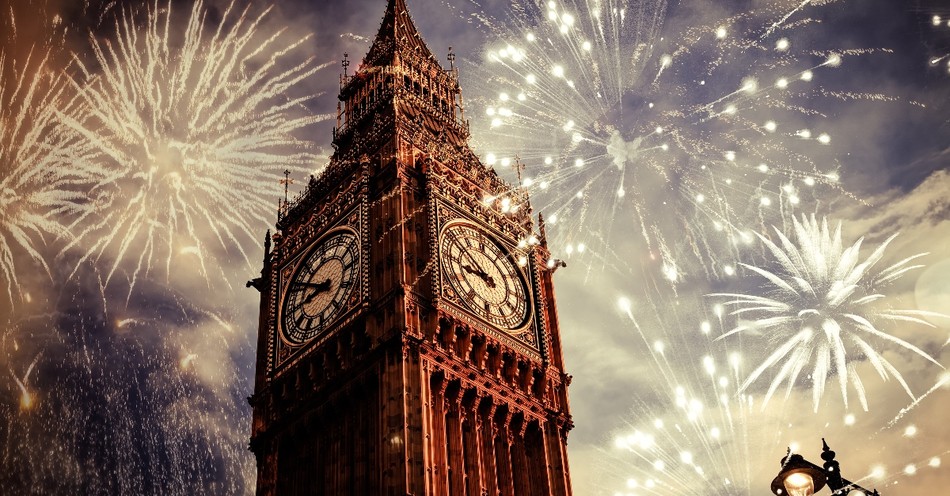“Remember, remember, the fifth of November.”
Especially if you live in the UK, you may have heard this popular rhyme about Guy Fawkes Day. But what is it that we are meant to recall?
Guy Fawkes Day, also known as Bonfire Night, originated in 1606 to celebrate the thwarting of The Gunpowder Plot, an attempt to blow up Parliament and kill King James I. However, this was no random act of terrorism. The plot was concocted by a group of English Catholics in an attempt to disrupt Protestant rule.
What drove this Catholic/Protestant hatred? What did it have to do with politics? And what can we learn from it today? To find out, we must go back to the 16th century — to Martin Luther, “Bloody Mary,” and the rule of Queen Elizabeth I.
Guy Fawkes Day and Protestants vs. Catholics
It may seem fitting that Guy Fawkes Day falls on November 5, five days after Reformation Day on October 31, which celebrates Martin Luther and the beginning of the Protestant Reformation in 1517.
Europe, in the 16th century, was a powder keg of religiopolitical turmoil. For centuries, the power of Rome and the Pope had upheld and even dethroned kings and rulers.
Upon the Reformation, religious wars broke out, from the German Peasants’ War to the French Wars of Religion to international conflicts like that between the Protestant Dutch Republic and Catholic Spain.
As wars broke out across the continent, King Henry VIII, father of Elizabeth, declared himself Head of the Church of England in 1534, cutting ties with the Pope, in a dispute that centered around Henry’s divorce suit.
Under Henry’s rule, and that of his son, Edward, religion in England was upended, various Catholic practices banned, and a new national church structure formed.
When Henry’s daughter, Mary, a devout Catholic, ascended to the throne, she set out to undo what her father and brother had done. During her five-year reign, she burned around three hundred Protestants and religious dissenters at the stake, earning her the infamous nickname “Bloody Mary.”
The country swapped again upon the ascension of the Protestant queen, Elizabeth, to the throne, and Catholics became the persecuted party once more. Now, instead of burning dissenters at the stake as heretics, Elizabeth, as the head of the Church of England, had them put to death as traitors — enemies of the crown.
Protestant hatred of Catholicism grew under the threat of war from the Catholic Spanish Armada and upon the Pope’s ex-communication and denouncement of Elizabeth as queen. Both sides had plenty of fodder to point fingers at the other with accusations of persecution and brutality.
Guy Fawkes Day and the Gunpowder Plot
When James I became king, many had high hopes that he might smooth over some of the conflict. Though he was Protestant, his mother, Mary Queen of Scots, had been Catholic.
International relations indeed calmed, and with the Treaty of London of 1604, tensions between England and Spain eased as England promised to end aid to the Protestant Dutch and Spain agreed to give no military assistance to English Catholics.
This didn’t mean James was a friend to Catholics, however. He continued many of Elizabeth’s policies, such as fines for those who refused to attend Protestant services.
Thus, a group of Catholic dissidents, led by Robert Catesby, came up with a plan. Catesby came up with an ambitious plot involving gunpowder in 1603 and began recruiting in 1604.
One of the men who joined the plot was Guy Fawkes, an English Catholic who had been fighting for the Spanish in Flanders, and who had special knowledge of explosives. Catesby, Fawkes, and three others met in May 1604 at the Duck and Drake Inn, where they swore an oath of loyalty and secrecy.
Thomas Percy, one of the plotters, began living in a house close to Parliament, where Fawkes posed as his servant. The group began acquiring gunpowder. The conspiracy grew, and in March of 1605, they rented a basement storeroom beneath the Palace of Westminster — the seat of Parliament.
The conspiracy now included 13 members. Thirty-six barrels of gunpowder were snuck into the storeroom, positioned to explode at just the right time.
The plot was complex, including an uprising in the Midlands and the kidnapping of a princess, but this part was simple — the explosion would kill the king, the prince, and the largely Protestant Parliament, leaving James’ daughter, Elizabeth, to become a puppet queen they could marry off to a Catholic — installing a Catholic monarchy once more.
The perfect day soon presented itself: November 5, the opening of Parliament, when Parliament, the prince, and the king would all be present.
Guy Fawkes Day and the Discovery
The conspirators may well have gotten away with it, were it not for an anonymous letter sent to Catholic Lord Monteagle, warning him not to attend the opening of Parliament on November 5. He was warned to burn the note but instead turned it over to the king’s men.
The note was met with skepticism, but the palace was searched on November 4 just in case. However, nothing odd was discovered except a privately rented storeroom stacked with an unusually large amount of firewood.
A second search was conducted later that day. This time, near midnight, it turned up a watchman near the storeroom in cloak, boots, and spurs — a man evidently ready to make a quick getaway. This supposed servant was, in fact, Guy Fawkes, with matches in his pocket.
Suspicious, the king’s men moved the firewood, revealing thirty-six barrels of gunpowder, a shocking amount. A 2003 study by the Centre for Explosion Studies at the University of Aberystwyth in Wales determined that if Fawkes had been able to ignite the barrels of gunpowder, the Houses of Parliament and Westminster Abbey would have been completely destroyed, with damage done to structures as far as a third of a mile away.
Fawkes, Catesby, and the other conspirators were all captured and/or killed. Catesby and two others died in a shootout with the king’s soldiers, while Fawkes was captured, tortured for information, and tried and sentenced to be hanged, drawn, and quartered with the other conspirators.
To this day, no one is sure who sent the note that doomed the Gunpowder Plot.
Guy Fawkes Day and the Celebration
The story goes that Londoners began setting bonfires to celebrate. James’ speech and official speeches given by leading churchmen stressed the terrible nature of the plot and its miraculous discovery. However, James was careful to acknowledge that there were plenty of English Catholics who were still loyal subjects, attempting to soothe tensions.
Parliament passed the Thanksgiving Act of 1606, declaring November 5 a day to thank God for deliverance from the plot.
The holiday grew, spreading to British colonies as well, including the American colonies. In many places, it became known as “Pope Day” and involved burning effigies of the Pope.
The holiday died out in America, but it lives on in Britain as Guy Fawkes Day, a day of fireworks, bonfires, and occasional burning of effigies of Guy Fawkes called “guys.”
Traditionally, children would take these effigies about, asking for a “penny for Guy” in a Halloween-like tradition, chanting, “remember, remember, the fifth of November.”
Though Guy Fawkes was not the mastermind of the conspiracy, since he was the one captured the night of November 4, he became the face of the holiday.
Guy Fawkes Day and Living in Love
Century-long hatred, persecution, and killing led to an attempt to blow up Parliament and kill dozens of the leaders of England in a move that would have left the country in turmoil.
How much of the Protestant/Catholic tension was religious, and how much was politics masquerading as religion? It’s hard to say. Especially in Europe at the time, politics and religion were so intimately intertwined that it was difficult to separate one from the other.
Today, religion and politics, in most countries, tend to be more removed from one another. However, hatred and violence based on religion have gone nowhere. When faced with others who disagree with us, who may even be persecuting us, what would Jesus have us do?
In Matthew 5:11-12, Jesus says, “Blessed are you when people insult you, persecute you and falsely say all kinds of evil against you because of me. Rejoice and be glad, because great is your reward in heaven, for in the same way they persecuted the prophets who were before you.”
But this doesn’t mean we are called to retaliate. In Matthew 5:44, Jesus, instead, says, “But I tell you, love your enemies and pray for those who persecute you.”
Whether we face trials and persecution from outside the church, others who claim to follow God, or Christians within our own circles, we are not called to respond with violence. Instead, we are called to love.
This Guy Fawkes Day let us not only rejoice that lives were saved but also remember the destructive power of hatred and the redeeming power of love.
Further Reading
“Guy Fawkes Day: A Brief History”
“The Explosive History of Guy Fawkes and the Gunpowder Plot”
Photo Credit: ©iStock/Getty Images Plus/melis82









